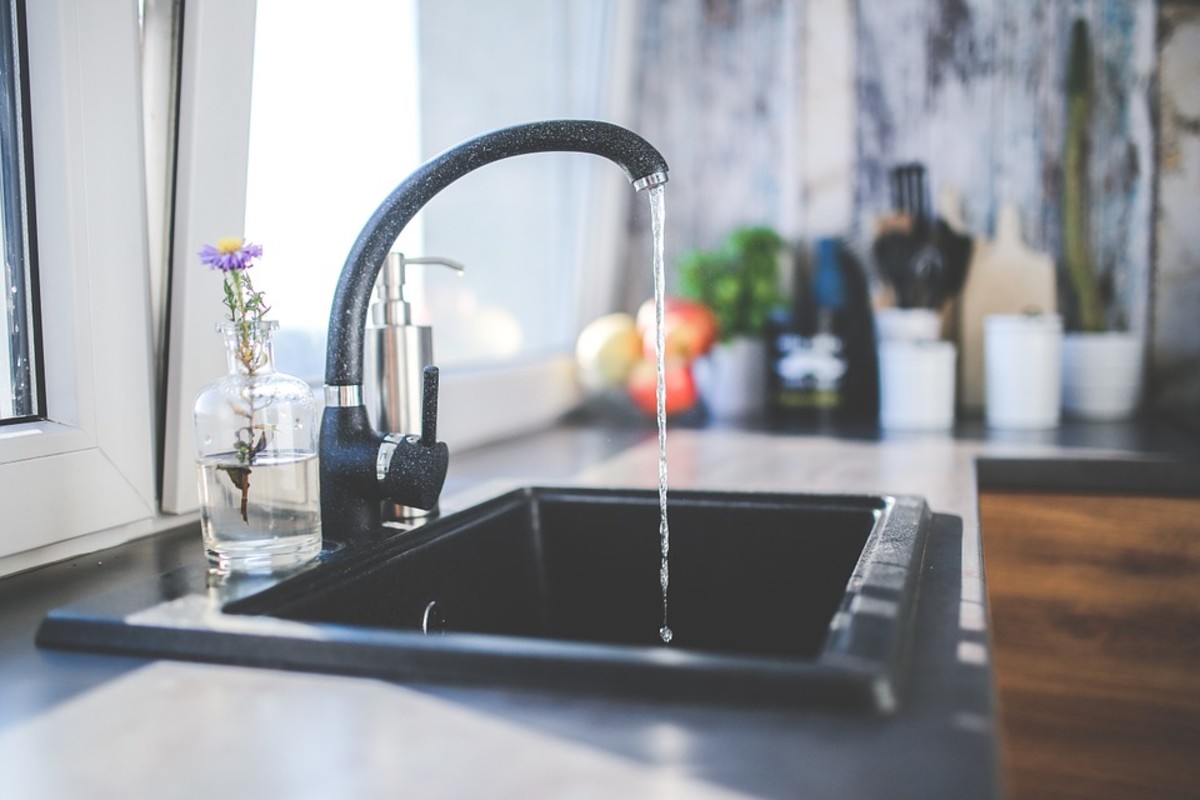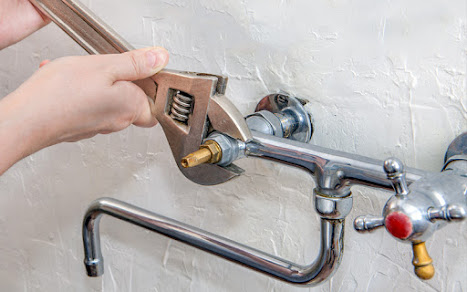Do you find yourself searching for related information around Why Do My Pipes Make Noises?

To diagnose loud plumbing, it is necessary to identify initial whether the undesirable noises occur on the system's inlet side-in various other words, when water is transformed on-or on the drain side. Noises on the inlet side have actually differed causes: excessive water pressure, used shutoff and faucet components, incorrectly connected pumps or other devices, improperly placed pipeline bolts, as well as plumbing runs containing way too many tight bends or other constraints. Noises on the drain side generally stem from inadequate place or, as with some inlet side sound, a design containing limited bends.
Hissing
Hissing noise that takes place when a tap is opened slightly usually signals extreme water pressure. Consult your neighborhood water company if you suspect this issue; it will have the ability to tell you the water stress in your location and can mount a pressurereducing valve on the inbound supply of water pipeline if required.
Thudding
Thudding sound, typically accompanied by shuddering pipelines, when a faucet or device valve is switched off is a condition called water hammer. The sound and resonance are caused by the resounding wave of pressure in the water, which unexpectedly has no place to go. Often opening a shutoff that discharges water swiftly into a section of piping containing a constraint, elbow, or tee installation can produce the exact same problem.
Water hammer can typically be healed by installing installations called air chambers or shock absorbers in the plumbing to which the trouble valves or taps are connected. These gadgets permit the shock wave created by the halted circulation of water to dissipate airborne they include, which (unlike water) is compressible.
Older plumbing systems might have short vertical sections of capped pipeline behind walls on faucet competes the very same purpose; these can ultimately loaded with water, reducing or ruining their performance. The cure is to drain the water supply completely by turning off the major water valve and opening all faucets. Then open up the primary supply shutoff and also shut the faucets one at a time, starting with the faucet nearest the shutoff and also ending with the one farthest away.
Chattering or Screeching
Intense chattering or screeching that happens when a valve or faucet is switched on, which normally goes away when the fitting is opened completely, signals loosened or malfunctioning inner parts. The service is to replace the valve or tap with a brand-new one.
Pumps and also appliances such as washing devices as well as dishwashing machines can move electric motor sound to pipes if they are improperly connected. Link such products to plumbing with plastic or rubber hoses-never stiff pipe-to isolate them.
Various Other Inlet Side Noises
Squeaking, squealing, damaging, breaking, and also touching generally are brought on by the development or tightening of pipelines, generally copper ones supplying hot water. The sounds occur as the pipes slide against loose bolts or strike nearby house framework. You can often pinpoint the place of the issue if the pipelines are subjected; just comply with the noise when the pipes are making noise. Most likely you will discover a loose pipeline wall mount or a location where pipelines exist so near to floor joists or other framing pieces that they clatter versus them. Affixing foam pipeline insulation around the pipelines at the point of get in touch with must correct the issue. Be sure straps as well as hangers are protected and give ample assistance. Where feasible, pipe fasteners should be affixed to large architectural aspects such as foundation wall surfaces as opposed to to mounting; doing so reduces the transmission of vibrations from plumbing to surface areas that can intensify as well as transfer them. If attaching bolts to framework is inevitable, wrap pipelines with insulation or various other resilient product where they speak to fasteners, and sandwich completions of brand-new fasteners in between rubber washing machines when installing them.
Correcting plumbing runs that experience flow-restricting tight or countless bends is a last resource that ought to be undertaken just after speaking with an experienced plumbing service provider. Sadly, this situation is rather typical in older houses that might not have been built with interior plumbing or that have seen numerous remodels, particularly by beginners.
Drain Noise
On the drainpipe side of plumbing, the chief objectives are to eliminate surface areas that can be struck by falling or hurrying water as well as to shield pipes to contain inevitable sounds.
In brand-new construction, bath tubs, shower stalls, toilets, and also wallmounted sinks and containers ought to be set on or versus resilient underlayments to minimize the transmission of sound with them. Water-saving toilets as well as faucets are less loud than traditional versions; install them as opposed to older types even if codes in your area still allow utilizing older components.
Drainpipes that do not run up and down to the cellar or that branch into straight pipe runs supported at flooring joists or other mounting existing particularly bothersome sound troubles. Such pipes are big sufficient to emit substantial vibration; they likewise bring substantial quantities of water, which makes the situation worse. In new building and construction, specify cast-iron soil pipelines (the huge pipes that drain commodes) if you can afford them. Their massiveness consists of a lot of the noise made by water going through them. Additionally, avoid routing drains in wall surfaces shown to bedrooms as well as areas where individuals gather. Walls consisting of drains should be soundproofed as was described earlier, making use of dual panels of sound-insulating fiberboard and wallboard. Pipes themselves can be covered with unique fiberglass insulation created the purpose; such pipes have an invulnerable plastic skin (occasionally containing lead). Results are not constantly satisfactory.
3 Most Common Reasons for Noisy Water Pipes
Water hammer
When water is running and is then suddenly turned off, the rushing liquid has no place to go and slams against the shut-off valve. The loud, thudding sound that follows is known as a water hammer. Besides being alarming, water hammer can potentially damage joints and connections in the water pipe itself. There are two primary methods of addressing this issue.
Check your air chamber. An air chamber is essentially a vertical pipe located near your faucet, often in the wall cavity that holds the plumbing connected to your sink or tub. The chamber is filled with air that compresses and absorbs the shock of the fast moving water when it suddenly stops. Unfortunately, over time air chambers tend to fill with water and lose their effectiveness. To replenish the air chambers in your house you can do the following. Turn off the water supply to your house at the main supply (or street level). Open your faucets to drain all of the water from your plumbing system. Turn the water back on. The incoming water will flush the air out of the pipes but not out of the vertical air chamber, where the air supply has been restored. Copper pipes
Copper pipes tend to expand as hot water passes through and transfers some of its heat to them. (Copper is both malleable and ductile.) In tight quarters, copper hot-water lines can expand and then noisily rub against your home's hidden structural features — studs, joists, support brackets, etc. — as it contracts.
One possible solution to this problem is to slightly lower the temperature setting on your hot water heater. In all but the most extreme cases, expanding and contracting copper pipes will not spring a leak. Unless you’re remodeling, there's no reason to remove sheetrock and insert foam padding around your copper pipes.
Water pressure that’s too high
If your water pressure is too high, it can also cause noisy water pipes. Worse, high water pressure can damage water-supplied appliances, such as your washing machine and dishwasher.
Most modern homes are equipped with a pressure regulator that's mounted where the water supply enters the house. If your home lacks a regulator, consider having one professionally installed. Finally, remember that most plumbers recommend that water is delivered throughout your home at no lower than 40 and no greater than 80 psi (pounds per square inch).
Whatever the state of your plumbing, one thing is certain — you’re eventually going to encounter repair and replacement issues around your home that require professional help. That’s where American Home Shield can come to your aid.
https://www.ahs.com/home-matters/repair-maintenance/causes-of-noisy-water-pipes/

Do you really like reading about Why is My Home Making Strange Plumbing Noises? Post feedback directly below. We would be pleased to see your responses about this page. In hopes to see you back again in the near future. You should set aside a second to distribute this content if you enjoyed reading it. I appreciate reading our article about Diagnose Unwanted Plumbing Noises.
Contact Us